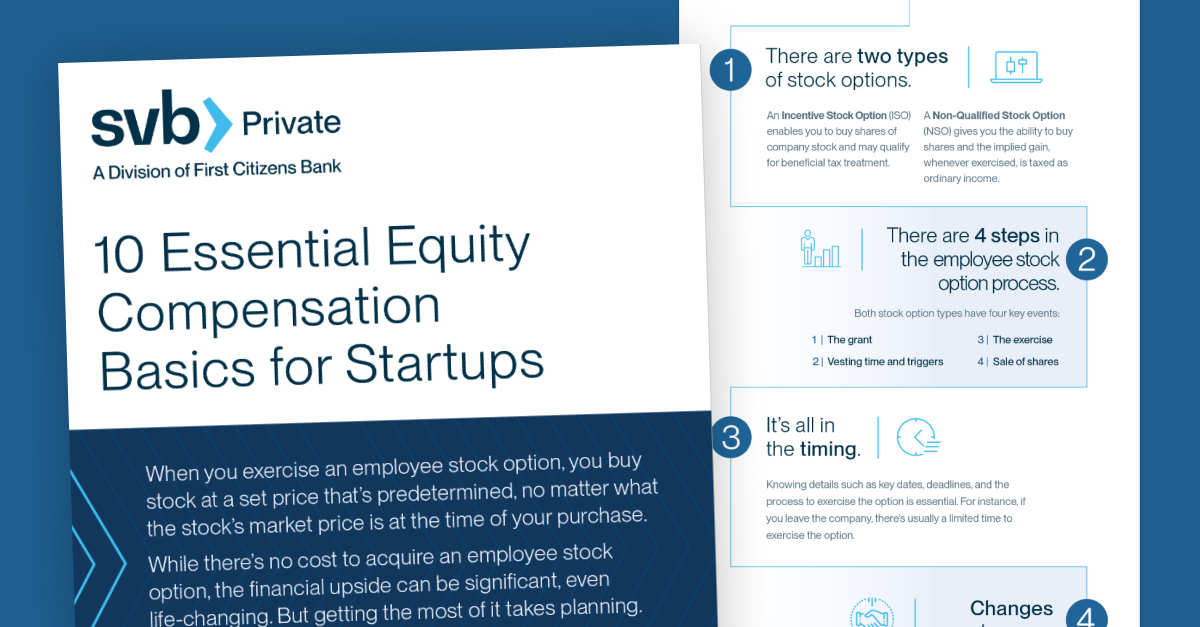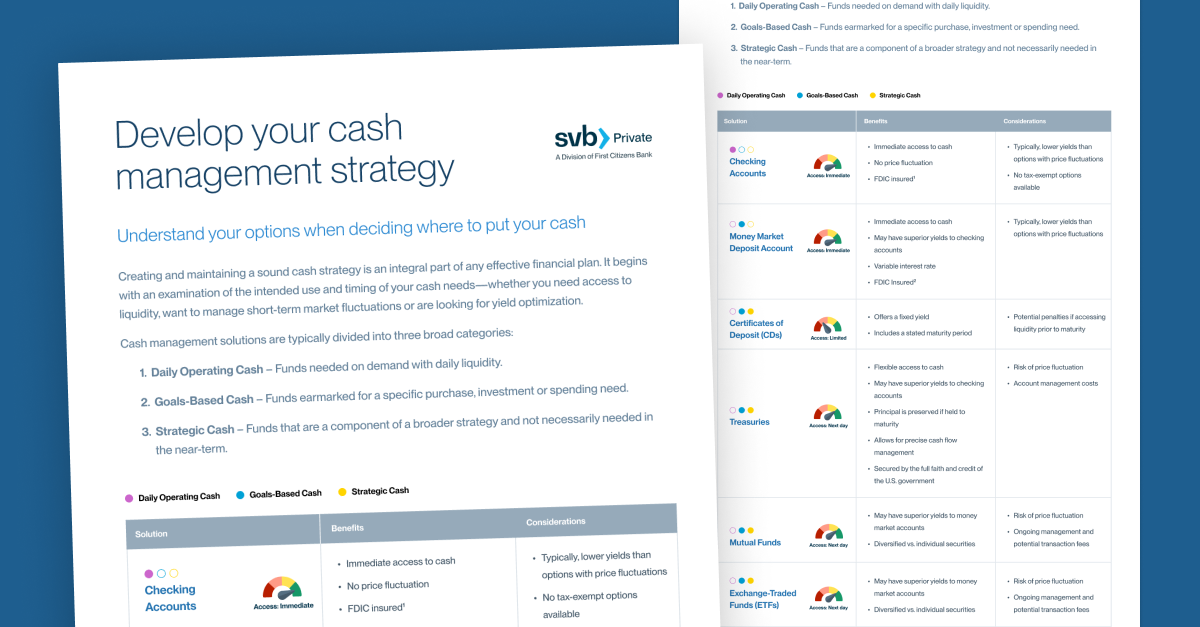We’re pleased to provide you with insights like these from Boston Private. Boston Private is now an SVB company. Together we’re well positioned to offer you the service, understanding, guidance and solutions to help you discover opportunities and build wealth – now and in the future.
Change is inevitable but planning for difficult scenarios can make all the difference
A part of the Business Toolkit series
Whether it's financial markets or business, downturns are not a matter of if but rather when. It could be a natural disaster, a change in regulation, new technology, lawsuits or any number of situations. When it comes to navigating disruption, the common thread is that some things are out of your control. However, you can control your reaction by creating a plan with a trusted financial partner.
But how do you plan for shortfalls when things are going well? The short answer is by assessing potential risks and having backup plans. Here are some considerations for when you're drawing up contingency plans.
Identify risks
Risks run the gamut depending on your location and line of business. To narrow down the most relevant, get a broad view of what's happening in your industry and then pay close attention to early indicators.
Take the case of Kodak and Fujifilm, for example. When digital cameras started to replace film, that was disruptive to the film giants. But while Fujifilm diversified into areas such as cosmetics or medical imaging technology, Kodak did not and the company was late to come up with digital consumer offerings. Kodak filed for bankruptcy in 2013 while Fujifilm has grown and recently bought Xerox for $2.3 billion.
Customer behavior can also serve as critical early signs of shifts that may turn into broader disruptive trends. Companies that pay close attention to shifts are better positioned to navigate disruption than those that fail to notice changes.
Another factor that can alter the market in fundamental ways is regulatory changes. In the last year, families and businesses spent a lot of time adjusting to new tax laws while General Data Protection Regulation (GDPR) in Europe forced companies to make changes to their data privacy practices while creating a growing cottage industry in privacy expertise and technology.
Once you've identified relevant risks to your business, assess the most significant areas for potential disruption and loss. Do this regularly, not just once a year.
Hire for specific expertise
It's one challenge to identify trends, another to stay in front of them. A crucial part of staying on top of trends is fostering a workforce that nurtures diverse talents and viewpoints. If your company doesn't have the necessary knowledge, experience or resources to deal with likely disruptors, look into hiring specific expertise — finding consultants or advisors.
Enlisting the help of professionals with specific expertise can be expensive, but it's an investment that can prevent losses later on. Another way companies can grow skill sets and knowledge is by seeking partnerships. Partnerships with universities can yield viewpoints that are very different from what's usually seen in the corporate world and also create a useful pipeline for hiring.
Be aware of the culture of change
Company culture plays a large role in how businesses react to changes. Rigid department rules and structures can get in the way of fostering innovation that is needed to adapt to disruption. For a company to pivot successfully — if that is what is required — employees need to be on board and understand the reasoning. Therefore, communication from leadership to front-line employees is also key. More and more companies are encouraging a core philosophy of continuous improvement that looks forward, rather than backward, when making changes.
There are long-term trends that require continuous innovation, and then there are sudden, unforeseen circumstances. Successfully navigating the unexpected requires foresight and planning. That's where backup plans come into play. Creating a plan with trusted experts can help you ensure you have those pieces in place. Having a financial cushion, insurance and updated succession plans put companies in a better position to deal with new threats.














